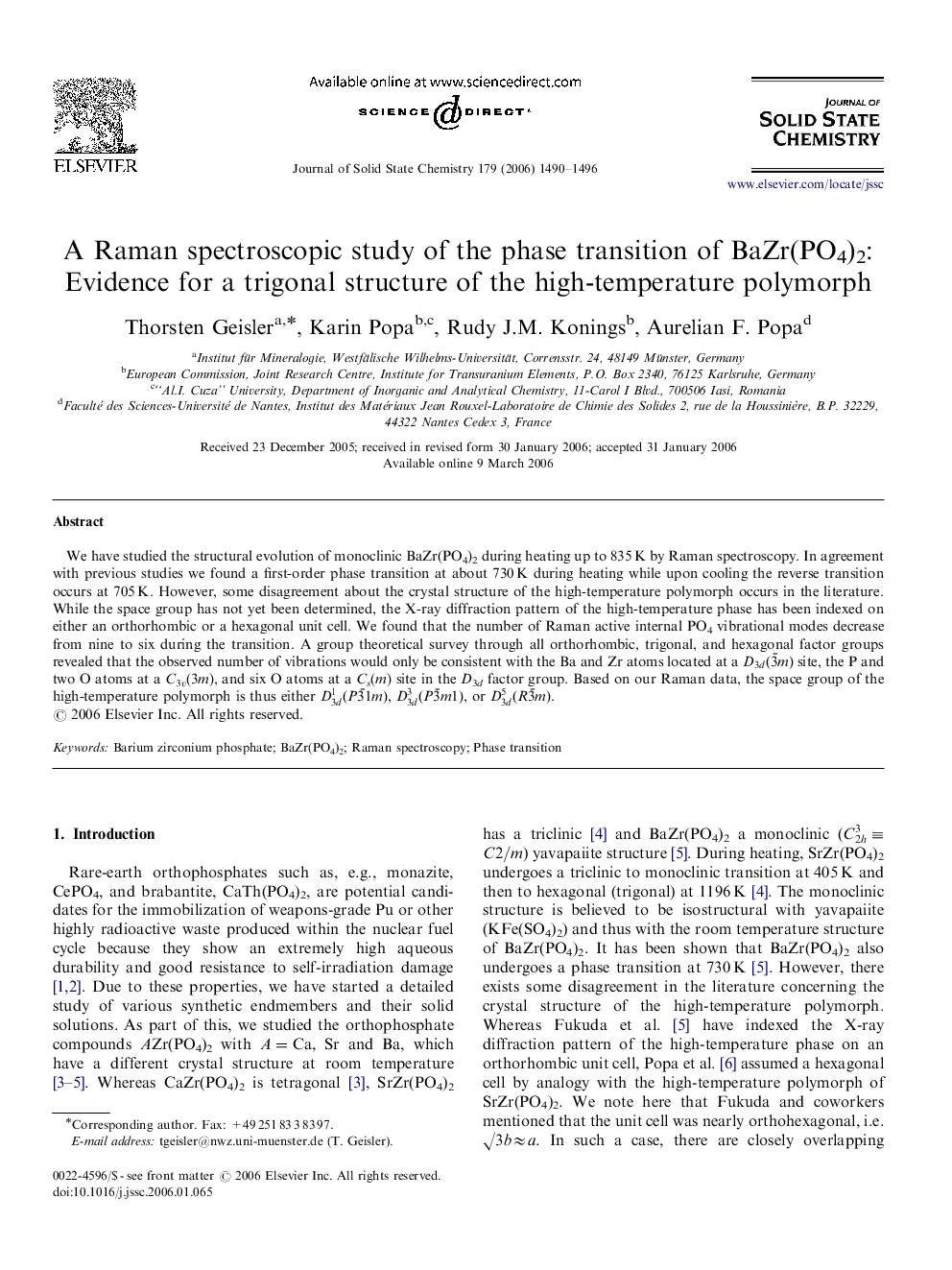| کد مقاله | کد نشریه | سال انتشار | مقاله انگلیسی | نسخه تمام متن |
|---|---|---|---|---|
| 1332872 | 979058 | 2006 | 7 صفحه PDF | دانلود رایگان |

We have studied the structural evolution of monoclinic BaZr(PO4)2 during heating up to 835 K by Raman spectroscopy. In agreement with previous studies we found a first-order phase transition at about 730 K during heating while upon cooling the reverse transition occurs at 705 K. However, some disagreement about the crystal structure of the high-temperature polymorph occurs in the literature. While the space group has not yet been determined, the X-ray diffraction pattern of the high-temperature phase has been indexed on either an orthorhombic or a hexagonal unit cell. We found that the number of Raman active internal PO4 vibrational modes decrease from nine to six during the transition. A group theoretical survey through all orthorhombic, trigonal, and hexagonal factor groups revealed that the observed number of vibrations would only be consistent with the Ba and Zr atoms located at a D3d(3¯m) site, the P and two O atoms at a C3v(3m), and six O atoms at a Cs(m) site in the D3d factor group. Based on our Raman data, the space group of the high-temperature polymorph is thus either D3d1(P3¯1m), D3d3(P3¯m1), or D3d5(R3¯m).
Raman mode frequencies of the PO4 stretching vibrations in BaZr(PO4)2 as a function of temperature during heating and cooling across the phase transition temperature near 730 K.Figure optionsDownload as PowerPoint slide
Journal: Journal of Solid State Chemistry - Volume 179, Issue 5, May 2006, Pages 1490–1496